How to Upload a File in Postman
Postman can be helpful when testing APIs that require file uploads or when sending complex JSON payloads. In this blog post, we will explore how to upload files in Postman and alternative ways to make it well. Let's dive in.
In the realm of API testing and development, dealing with file uploads is a fundamental task. Postman, a user-friendly API testing tool, offers functions for uploading and sending files. But what's the best approach for seamlessly uploading files in Postman? We'll delve into this topic in the following blog.
However, it's important to recognize that Postman does have its limitations, particularly when it comes to API collection runners. If you're in search of a more versatile alternative, read on, as we'll also introduce you to Apidog, which stands out as the optimal solution for your file uploading requirements.
An Ultimate Guide to Upload Files in Postman
When testing APIs, it's common to need to upload files as part of the request. Postman uploads files this process is easy with its built-in file-uploading feature. This feature is essential for scenarios where applications need to process and handle user-uploaded images, documents, or various file types.
Step 1. Select the POST Request in Postman
To upload a file in Postman, start by creating a new request or opening an existing API. Here is a POST request as an example.
Step 2. Choose the "form-data" File
Select the "Body" tab and choose "form-data" as the type of body. In addition, Postman provides uploading binary request bodies too.

Step 3. Click on "Files" to Set the Value Type
Select the file or text you want to upload. You can also specify a key for the file, which will be used in the API request. Here we set the "File" to upload.

Step 4. Upload a File in Postman
Once you have uploaded your file to Postman and set the key, you can send the request as usual. The file will be included in the request and click "Send" file in form data in Postman.

Here is the ultimate guide to help you upload Postman files and JSON data.

However, in the ever-evolving landscape of file uploads, there are alternative solutions that can significantly enhance your API testing experience.
Enter Apidog, a robust API toolkit with a user-friendly interface and support for various file formats. Let's explore how Apidog simplifies the process of uploading files for testing purposes.
Apidog: The Best Postman Alternative
Apidog is a powerful Postman alternative toolkit that boasts a user-friendly interface and supports the uploading of multiple file formats. Apidog's file uploading capability is designed to make API testing more efficient and effective, allowing developers and testers to seamlessly incorporate file upload functionality into their API testing workflows.
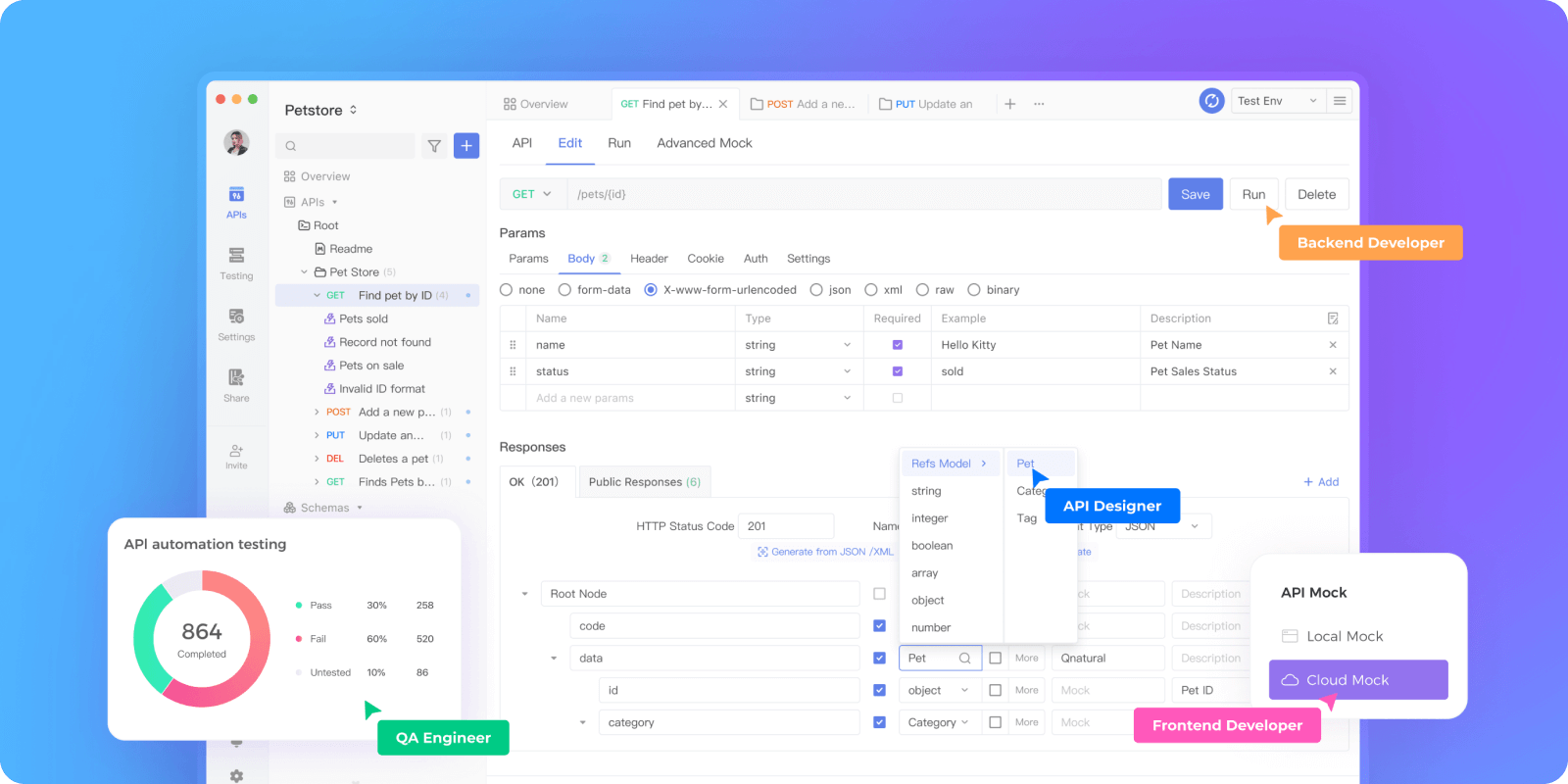
In Apidog, you can easily upload files for testing by creating a new request and navigating to the "Body" tab. From there, you can select various parameters, such as form-data, binary, JSON, etc. You can easily switch from Postman to Apidog as a beginner.
How to Upload Files Quickly in Apidog?
Now, we will introduce the guide on how to upload a file in Apidog quickly. First, you can get started on Apidog web or free download to log in via Google or Github.
- To open the API, switch to the Edit page. If you're a new user, you can quickly create a new request by clicking on the "+" icon in the left sidebar.
- Next, in the "Body", you can select the media type or data type you want to upload. Select "raw", and input text or plain below.
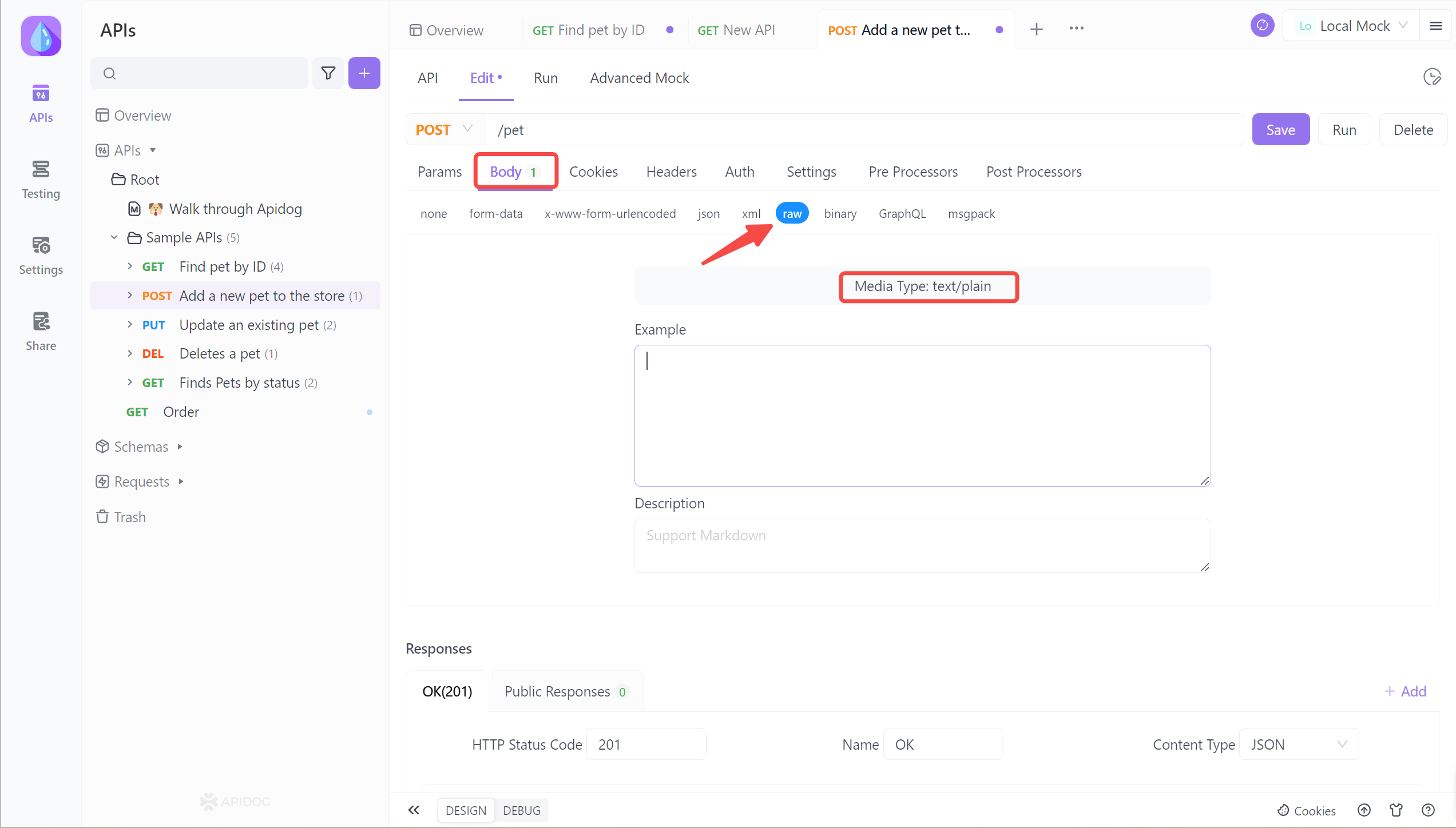
Raw: This is a data type used to send raw data in the HTTP request body. When using the RAW parameter, a user can directly specify the data to be sent in the request body without using a specific encoding or format. This method is more flexible and can be used to send various types of data, including plain text, JSON, XML, etc.
Optional: Apidog also supports uploading applications and octet-stream. You can click the "Upload" button to choose which file you want to upload in Apidog.
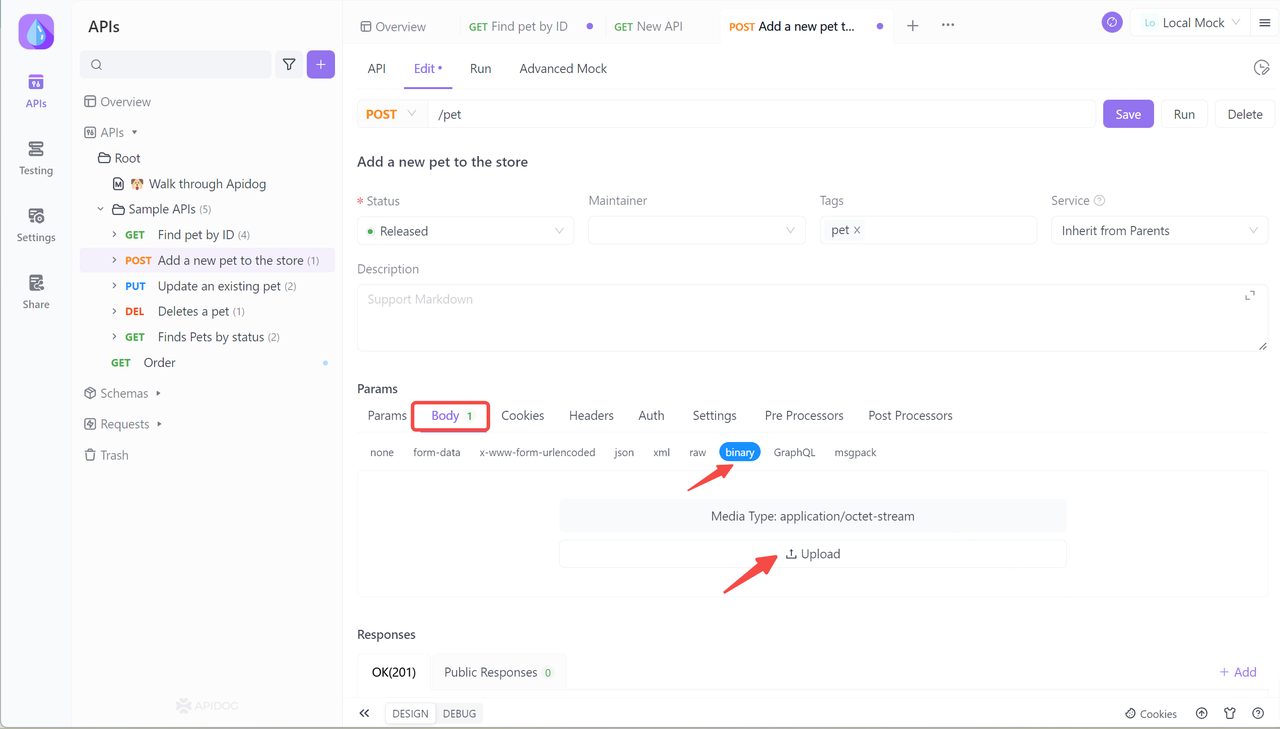
3. Select the Text document to be uploaded, that supports Markdown format. When finished, click the Save button.
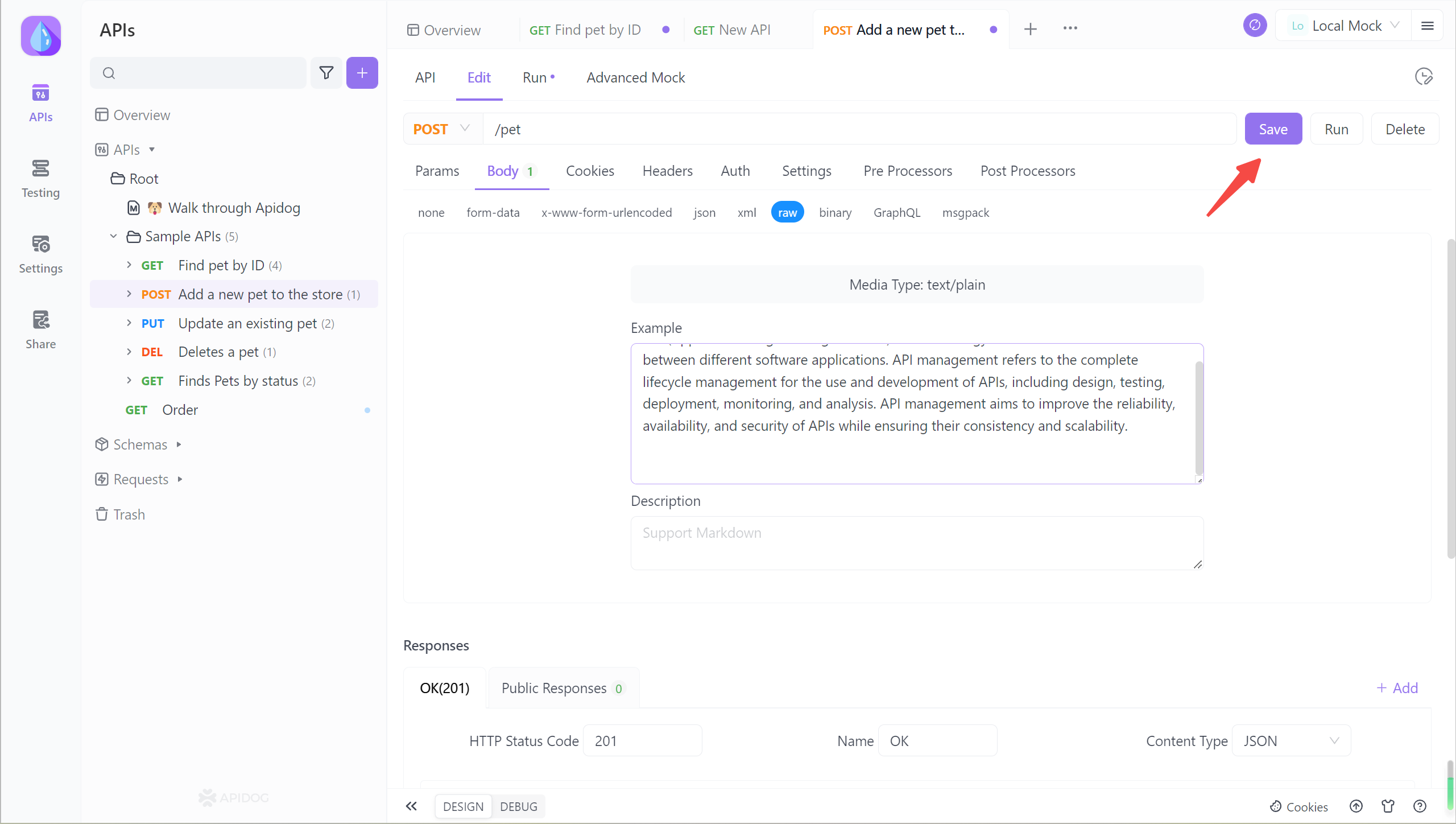
4. Send the request and Response schema verification passed.
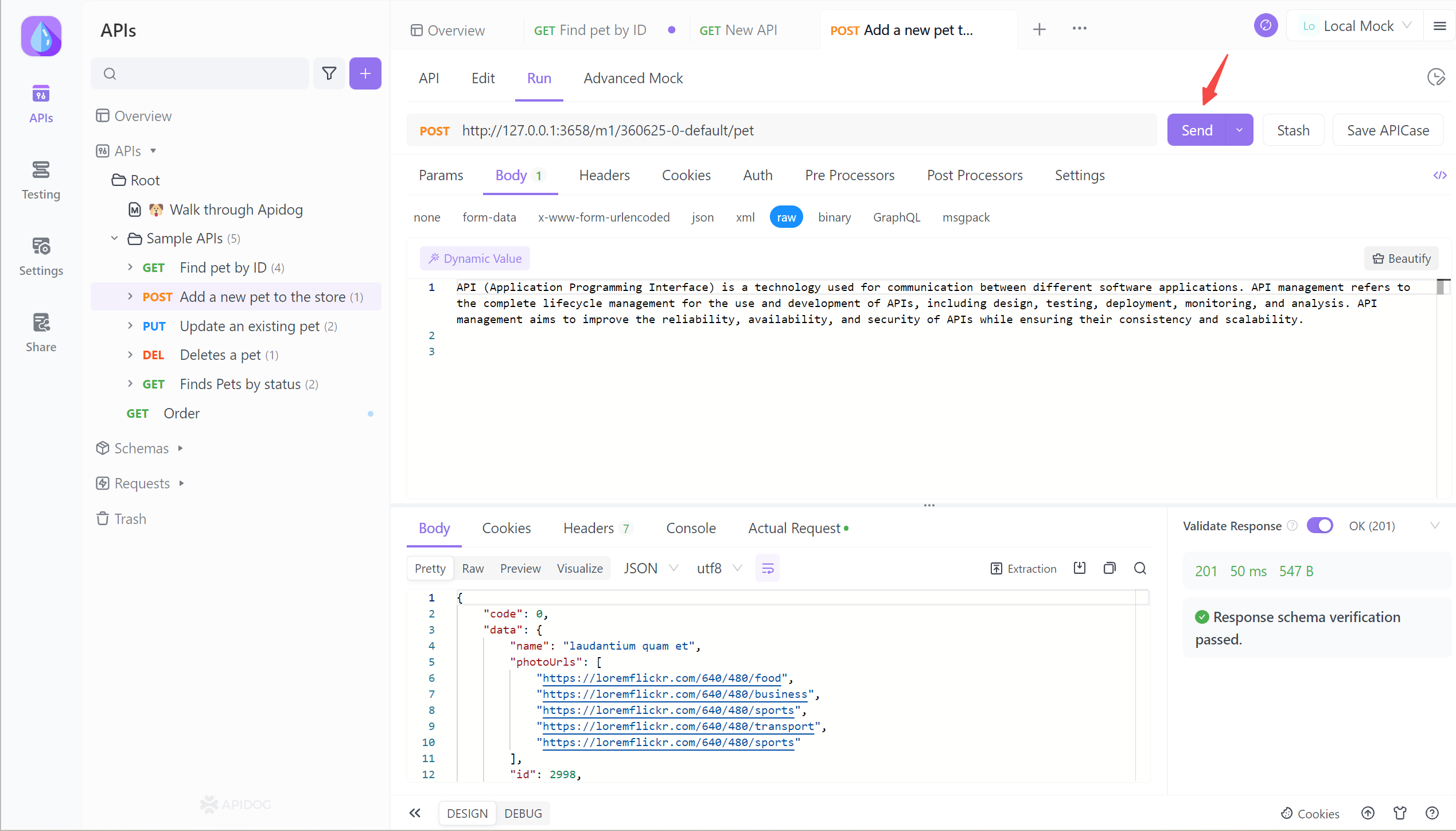
Apiodg stands out as an API documentation generator due to its exemplary ease of use, combined with a broad range of feature offerings. Additionally, the learning curve for using this tool is notably low, making it accessible to users of all experience levels and technical proficiency.
Conclusion
These are the detailed steps for uploading files in Postman, follow the steps and you will be able to master them. Apidog is not only easy to use and visualize, but also has the ability to design, manage and mock documents in addition to the testing features supported by Postman, and the ability to import APIs in Postman format with one click for seamless conversion to Apidog.






